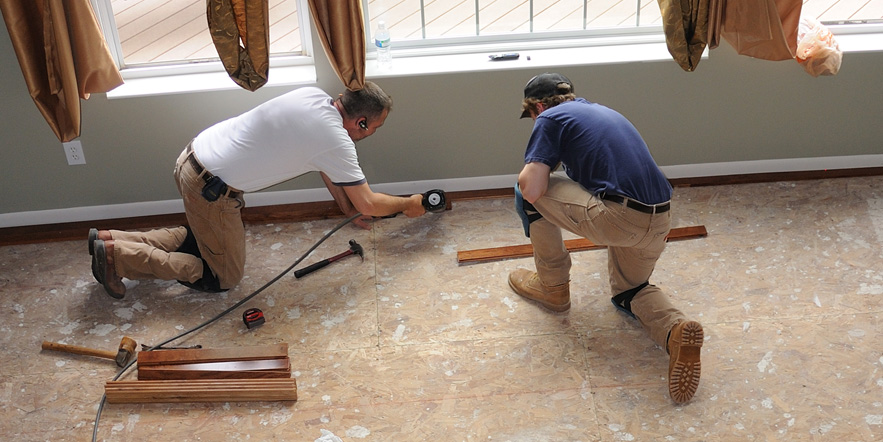Now that spring has blossomed into full-on allergy mode, the time we spend outside is even more appreciated — especially with the help of a good antihistamine. The next time you venture out, take a moment to do a walk-around inspection of the old homestead. See some room for improvements? Maintaining, repairing and upgrading a home can range in cost from a minor trickle to a major cash drain.
Paying for minor repairs
If you see the need for only modest repairs, you might be able to tackle them within the bounds of your cash flow. But remember, your emergency fund is best left intact for unexpected cash needs, not for replacing a gutter or downspout.
If you have a bit of a cash cushion in your checking account or in a contingency savings account, small home projects can be covered with your close-at-hand liquidity, even if it means a temporary trim to discretionary spending, such as a couple of “family nights out” spent at home.
If the need exceeds the cash
If your home-repair needs are more costly, you might consider turning to your secondary tier of financial resources: a credit card. When it comes to minor improvements or repairs, having that extra spending power available will allow you to fix what’s needed now, while budgeting the repayment over a period of time. It’s best to keep that payback schedule from extending longer than three to six months.
If you need to spread the payments out beyond that, you might protect your credit score — and pay less interest — by considering our next funding alternative.
Raising the roof on expenses
Larger home upgrades or repairs are going to require bigger investments. A new roof, exterior painting, foundation repairs or other projects will protect your home’s value — and can end up costing more the longer you delay. Under these circumstances, a personal loan often can get you more than your credit card limit will allow, as well as save you money.
A secured loan will offer a better rate than an unsecured loan, while both likely will offer much better long-term interest rates than a credit card. Longer repayment terms will be favorable for these larger projects, too.
Covering the cost of major upgrades
Your strolling inspection — in, around and outside your home — might have revealed a need for a major upgrade. Perhaps the furnace has heaved its last gasp, or the air conditioning is already struggling with the warmer spring weather. Or it might be time to do a bit of renovation to a bath or kitchen that is well past its “best by” date.
In that case, it might be well worth tapping a home equity line of credit, or HELOC. Accessing the value of your home will allow you even greater financial flexibility. Once approved for an open-ended revolving credit line, you can draw from it at any time, as needed. And you’ll pay interest only on the balance you’ve withdrawn.
Not only are the variable rates very favorable on HELOCs, but the interest paid may be tax-deductible. Your tax advisor can give you details on that. And repayment terms can stretch as long as 15 years, depending on the amount financed.
Refinancing can pay for home improvements, too!
With mortgage rates at historic lows, it’s the perfect time to slice your monthly mortgage payment. And, in case you need any other reason, try this one on for size: cash-out refinancing to fund your home improvement projects. You can refinance your mortgage and pull cash out of your equity to pay for home improvements or upgrades.
The best use of cash-out refinancing is for home improvements that increase the value of your home. However, not all home improvements increase resale value, so select your home projects carefully to get the most bang for your buck. (Among the best-sellers in home improvements today are kitchen and bathroom upgrades.)
From a small repair to a major improvement, there are prudent ways to fund whatever spring home project you decide to undertake. Contact Member Services to start upgrading your home today!




